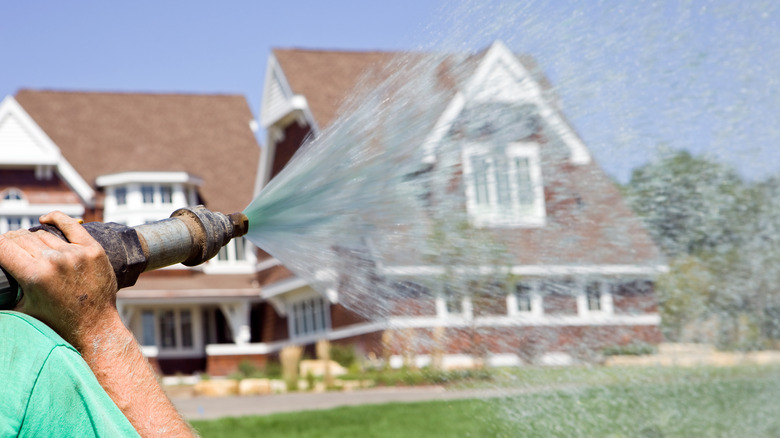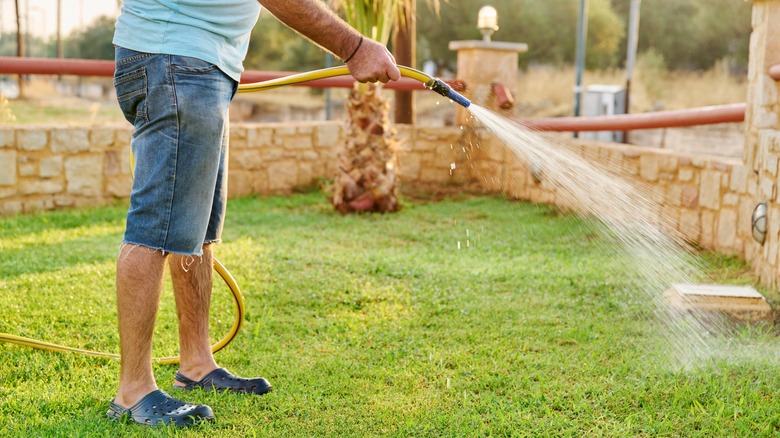Drawbacks You Should Know Before Hydroseeding Your Lawn
Hydroseeding, with its innovative approach to lawn establishment, has rapidly gained favor among homeowners and professional landscapers. This lawn treatment technique showcases its prowess by surpassing the performance of more traditional seeding techniques. Its notable germination rates aren't just numbers on paper — many experts in the field vouch for its outstanding efficacy, making it a great option for those seeking a lush lawn. Yet, as with any solution, hydroseeding isn't universally perfect. While its benefits might make it seem like an obvious choice, it's important to acknowledge the challenges accompanying the method. Similar to its more traditional seeding counterparts, hydroseeding is subject to the cycles of nature, and seasonal factors play a significant role in its success. The period during which hydroseeding is applied can make the difference between a thriving green carpet and a lackluster result.
Furthermore, the method's success hinges on its constant need for water. It can also be time-consuming and doesn't automatically adapt to every soil type. Therefore, before you decide to embrace hydroseeding as the solution for your lawn's makeover, it's imperative to probe deeper. Take the time to understand what it offers — from its undeniable advantages to its limitations.
High water needs: the thirst of hydroseeding
First and foremost, moisture is a crucial aspect that you must not overlook when contemplating hydroseeding. This modern technique, lauded for its efficiency, comes with a caveat: it has an insatiable thirst. You can't just water the area once and expect results; the process demands continuous attention and commitment over the span of several weeks. The slurry, a concoction of water, seeds, mulch, and sometimes fertilizers, thrives only when kept consistently moist, often requiring watering two to three times a day for about 20 minutes. While essential for seed germination, this rigorous watering routine might become a cause for concern when you observe your monthly water bills. Particularly in the initial weeks after hydroseeding, there's a possibility of your expenses escalating due to this heightened water usage.
However, the repercussions aren't just monetary. There's an often-underestimated investment of time, effort, and precision. To achieve and maintain the ideal moisture level, you need to be on your toes, ensuring good soil preparation and timely watering. Those early days post-application are particularly critical. Things like missing a watering session or bad fertilization can have detrimental effects. It can compromise germination, potentially resulting in patchy growth or a failed lawn rejuvenation attempt. Given these factors, weighing the commitments against the benefits is essential when considering hydroseeding.
Seasonal constraints: timing is everything
If the potential benefits of hydroseeding appeal to you, you should take the role of timing into account. While certain lawn care methods provide you with a degree of flexibility, hydroseeding isn't one of them. This method has specific needs regarding the changing seasons and their implications. Every seed, in its essence, is deeply attuned to temperature changes. Think about those scorching summer days or the biting cold of winter; these extremes can disrupt and even halt the germination process altogether. For this reason, you should consider late spring or early fall as your ideal window for hydroseeding. During these times, nature fosters an environment conducive to growth.
Considering the unpredictability of weather patterns, it's also vital to be cautious if you're contemplating hydroseeding during potentially rainy periods. This way, you'll avoid the disappointment of a torrential downpour washing away your freshly laid seed-mulch blend.
Also, remember that hydroseeding demands consistent moisture for the seeds to germinate; therefore, it's not suitable for dry climates where supplemental irrigation isn't available. If you reside in a region grappling with water restrictions or prone to droughts, the method's persistent thirst may make it less practical or even untenable. Your seed-mulch mixture is likely to dry out, hindering germination.


